Hot pot for one. It’s a new experience for noodlies, Sydney food blog.
Hot pot (huǒ guō) is yet another Chinese dish that has migrated across Asia, taken root and adapted by locals. Hot pot is popular across Asia including Singapore, Malaysia (sometimes referred to as steam boat), Japan (shabu shabu, sukyaki), Thailand (Thai suki – Japanese influence), Taiwan (shabu shabu – also due to Japanese influence) and Vietnam (where it’s called lau). Hot pot is basically a dyi cooking experience and is made up of three components:
- soup base: which has been brought to a boil and kept simmering at the table usually by a gas cooker. Depending on cultures, the soup could be spicy, plain, sweet and sour.
- raw ingredients: thinly sliced meats, seafood, vegetables, egg, noodles which cook in the soup.
- sauces: to dip ingredients after cooking.
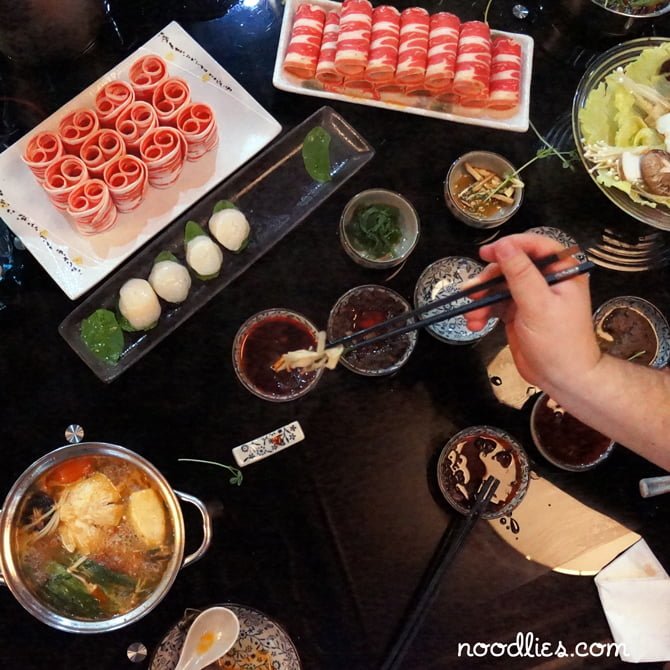
It’s a communal experience because it’s just not practical to go to all that effort for one – besides this dish is all about diner participation, the point of a hot pot is that you’re sharing and cooking and dipping with other people from the one pot. While it’s fun, it’s also a very intimate experience, think about it, you’re cooking your food and dipping your chopsticks in the same hotpot and often dip the cooked food in the same sauce dishes.
China’s economic prosperity is creating a large new middle class and perhaps it’s responsible for the spread of a new hot pot twist – individual hot pot, where the pot is yours alone. China’s hot pot was traditionally about family and community, however, for the contemporary cashed-up, brand conscious Chinese, it’s more about ‘me’ and the trappings of personal success – after all, there’s an “i” in “communism”. An individual hot pot caters for the diner’s personal tastes, preferences and of course, hygiene. Restaurants offering individual hot pot is gaining in popularity across China, especially in more affluent cities like Shanghai.
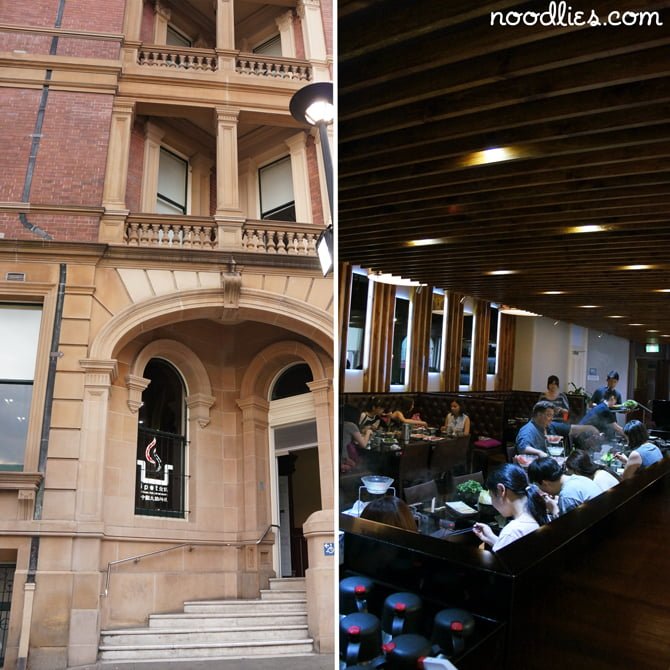
Owner, Jiang Jiang (JJ) thinks his ipot venture will succeed in Sydney. He’s the first to bring the individual hot pot experience to Sydney. Located in the Trades Hall Building (a delicious irony) it’s a smart, funky looking restaurant that’s had the benefit of architectural design; dark browns, chocolate and black colours create an intimate, inviting atmosphere while moody down-lights while the row of slim, back-lit mirrors along the walls gives the place a flashy, clubby feel. Seating is predominantly booth style offering plenty of personal space, the booths on the far wall are particularly high – perhaps demonstrating ipot understands the “i” generation’s need for personal space and privacy. The individual pots are cooked at the table, actually on the table which has state of the art induction elements, seamlessly built into the glass top – there’s four elements in each table. Early on a Friday night, the place is already half-full with young, slim and pretty Chinese girls who continuously instagram their dining experience with their iPhone, these are likely overseas students, children of China’s new affluent class.
JJ thinks Ipot will be popular with Sydney-siders as well. For some Australians hygiene issues associated with sharing a dish are still a blockage, JJ reckons ipot is an attractive option because it offers a communal dyi dining experience “but allows for personal choice”. It’s a good option where there are vegetarians in the party, ipot offers a range of soup bases for carnivores (hot and spicy, hearty beef and tomato) as well as herbivores (smokey mushroom – see below).
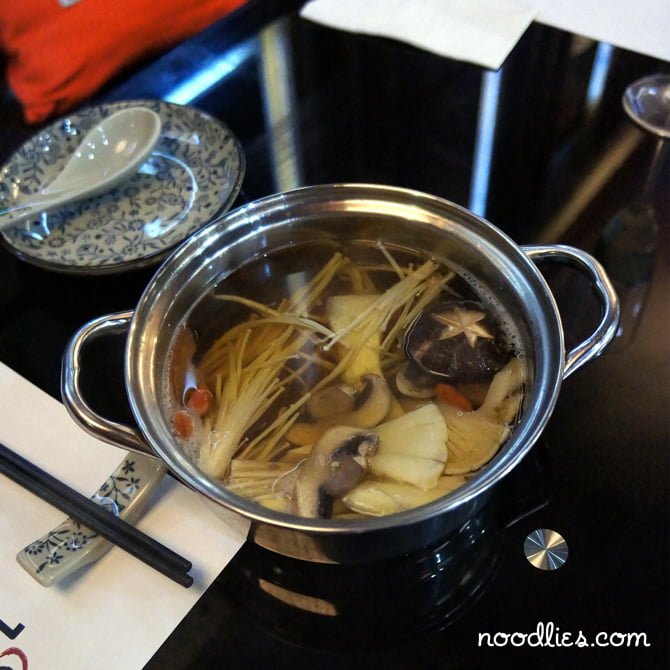
On our visit, noodlies, Sydney food blog had all three soup bases mentioned above, the clean mushroom soup is pretty punchy with strong earthy Chinese mushroom flavour, however the beef and tomato is my favourite, hearty with amazing savoury sweetness that improves as more meat and vegetables are cooked in it. There’s over 20 different dipping sauces to choose from at the circular sauce counter – from mild to spicy, light to heavy (see below). JJ mixed a special sauce of chilli, mushroom and coriander for us to try – the rich, thick sauce adds a deeper level of flavour without overpowering the food, it’s astoundingly more-ish, like all good sauces, it makes you long to eat it with with a bowl of plain, fluffy white rice.

Noodlies sampled a 10 different raw ingredients, from Queensland rangeland aged beef, lamb (below top-left), amazing selection of seasonal mushrooms (below, top-right), NZ green lipped mussels, delicate Australian scallops, ipot egg dumplings – the shell is made predominantly from egg (below, bottom right) and stunning tied Japanese rice noodles that resembles swimming goldfish (below, bottom-left).
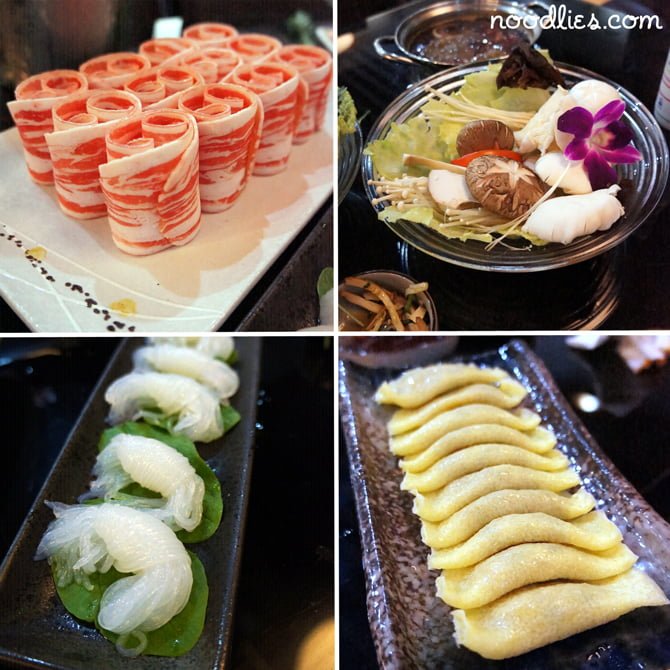
ipot is a reflection of contemporary, confident China – a traditional dish over a 1,000 years is now updated, it’s changing with the times – modern technology, funky image, all with a greater emphasis on the individual. Oh, and these days, it’s very accessible to the West.
Do you like the idea of an individual hot pot? Would it tempt you to visit a hot pot restaurant?
Share your thoughts in the comments section below.
ipot Chinese Hot Pot
Trades Hall Building
Shop 4, 4-10 Goulburn St, Haymarket
Ph: (02) 8355 3188
Noodlies, Sydney food, travel blog and guest dined courtesy of horizon communications group and ipot.

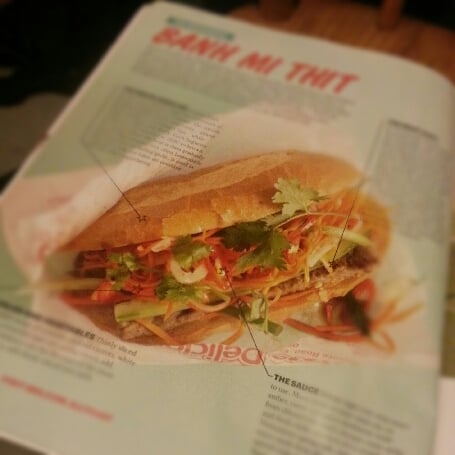
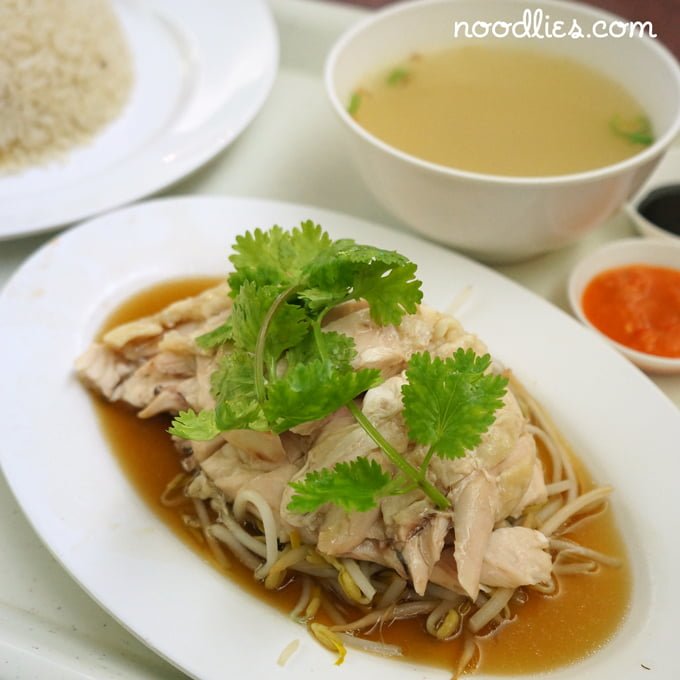
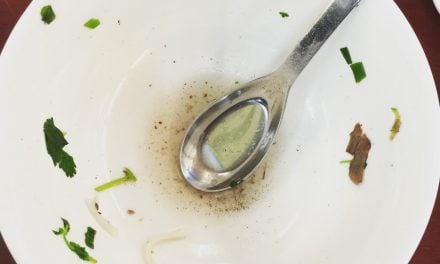

Thanks for the tip.
Individual hot pots heh? Sounds different.
Thanks Glenn for leaving a comment, try it and tell me what you think?
I do like the idea of individual hot pot! No fighting over the last slice of beef! lol
Haha, and no one stealing your cooked meat, lol!
And you can blend the soup to your exact taste. As salty or as spicy as you like. No need to compromise 😉
Yeah, I can def see the benefit
Wow! I can’t believe we looked this place up and thought it was dodgy! Looks very sophisticated and modern…I wonder how good the value is here. Do you think the prices are reasonable?
The prices are ok, bear in mind they have to have special tables made up and the atmosphere is decent.. they charge per different sauce so that could add up. But overall it’s a great experience.